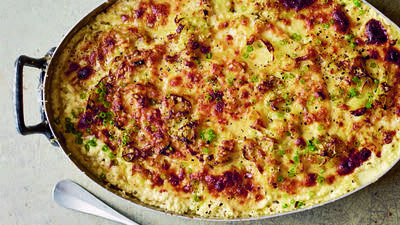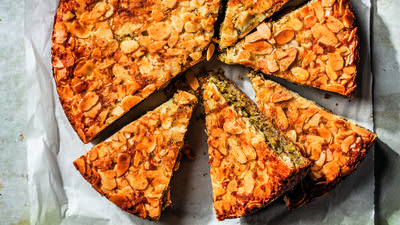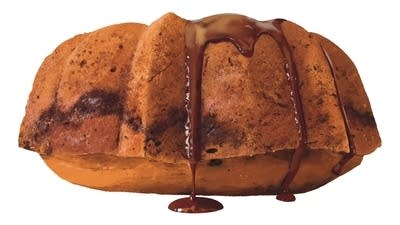
Cathy Barrow, author of Mrs. Wheelbarrow's Practical Pantry, says springtime is pickling time. [More from Barrow on canning.]
Spring vegetables say, 'Pickle me'
David Leite: They say that in spring a young man's fancy turns to love. But I have a funny feeling in spring your fancy turns to something very different.
 Cathy Barrow
Photo: Christopher Hirsheimer
Cathy Barrow
Photo: Christopher Hirsheimer
Cathy Barrow: It does. When I walk through the farmers market, I see all those brand-new vegetables. All they say to me is, "Pickle me." I do refrigerator pickles, "quickles," the kind of pickles that are shelf stable so that I can enjoy them year-round and even lacto-fermented pickles like half sours.
DL: How do refrigerator pickles differ from "quickles" and traditionally pickled pickles?
CB: I have to admit that I think I made up most of this. A "quickle," for me, is something that I can prepare and eat within a day or two. A refrigerator pickle I consider something that needs a little more time to brine and develop. It is kept in the refrigerator and not on the shelf.
DL: What are some of your favorite varieties of refrigerator pickles or nice combinations?
CB: In the spring I like to pickle tiny carrots. One of the farmers I know very well at my farmers market brings in thinnings from his rows. He'll have thin, little carrots, small scallions and onions, and other vegetables that he's pulled from between the others to give them room to grow. Those tiny, baby vegetables are beautiful pickled.
Brining time depends on a vegetable's density
DL: How long is that time for extra brining for refrigerator pickles?
CB: It really depends on what you're pickling. A pickle requires that the water in the food be replaced by a salty solution or a vinegar solution through that thing that we used to remember in science class called osmosis.
Some vegetables are more dense, like a cauliflower, and that might require blanching ahead of time and then pickling for 4 or 5 days. Whereas small slices of jalapeño might take only a day or two to fully pickle.
Choose water, salt and vinegar carefully
DL: The brine that you use -- what are some of the ingredients? That can vary tremendously with spices.
 Mrs. Wheelbarrow's Practical Pantry
Mrs. Wheelbarrow's Practical Pantry
CB: Not only with spices, but also with vinegar.
I start always with very, very clean, clear, non-chlorinated water. A lot of us have minerals in our water, particularly things like sulfur for people who are working off a well. Those flavors are going to come right through into your pickle. If your water doesn't taste delicious, buy bottled water to pickle with.
The salt is very important. You never want to use iodized table salt because that iodine flavor will come through into your pickles. It will also darken them. It's unreliable. Work with kosher salt or sea salt. A smaller crystal is going to dissolve more thoroughly, so that's what you want to look for.
With a refrigerator pickle, you can use any vinegar, although I tend to shy away from fruit vinegars when it comes to pickles. I just can't wrap my mind around it.
DL: Like apple cider vinegar?
CB: Apple cider vinegar I love, but raspberry or strawberry I'm probably not going to use.
DL: Strawberry vinegar wouldn't work with carrots.
CB: No, bad idea. I keep always plain white vinegar, apple cider vinegar and rice wine vinegar to use. Sometimes I even use things like sherry wine vinegar or red wine vinegar.
DL: Do you ever use malt vinegar?
CB: I have used malt vinegar. I find the flavor is a little overwhelming for tender pickles.
Make your own pickling spice
CB: Pickling spices are a wonderful melange. You can buy them already done in the grocery store. I prefer to make my own because most pickling spice has, for me, a little too much allspice. I cut back on the allspice in mine.
It's traditional to have yellow mustard seed, maybe celery seed, maybe dill seed, some allspice, some cinnamon and some red pepper flakes. Those are all traditional to put into your pickling spice.
I encourage everybody to find what they like in a pickle and make their own spice.
2 spring pickle recipes to try
 Barrow's recipe: Juniper-Pickled Cocktail Onions
Barrow's recipe: Juniper-Pickled Cocktail Onions
DL: You have two recipes in your book that I have been fascinated by. One of them is the Sugar Snap, Carrot, and Radish Refrigerator Pickles.
CB: I love that pickle. In the early spring, it has all the crunch that you've been missing all winter. All winter long we roast our vegetables within an inch of their life. They're wonderful like that, but don't you just want something to crunch? Those radishes and those peas, they're quick to pickle. It's a very nice side dish or even a topping for a regular green salad.
DL: There's also a Juniper-Pickled Cocktail Onion.
CB: Just say, "Gibson." Put it on the side of your martini and you have a whole new world.
I pickled those onions for several reasons. I'm a big fan of pâté and a ploughman's lunch. I like to do that, and the pickled onions that I would buy in the store always had a funny aftertaste. I wanted to develop a recipe that wouldn't have that aftertaste and would have more of that really exciting spring flavor of young onions.
This also picks up a little of the juniper from a classic gin because I do think it belongs in a Gibson.
Before you go...
Each week, The Splendid Table brings you stories that expand your world view, inspire you to try something new, and show how food connects us all. We rely on your generous support. For as little as $5 a month, you can have a lasting impact on The Splendid Table. And, when you donate, you’ll join a community of like-minded individuals who love good food, good conversation, and kitchen companionship. Show your love for The Splendid Table with a gift today.
Thank you for your support.
Donate today for as little as $5.00 a month. Your gift only takes a few minutes and has a lasting impact on The Splendid Table and you'll be welcomed into The Splendid Table Co-op.




